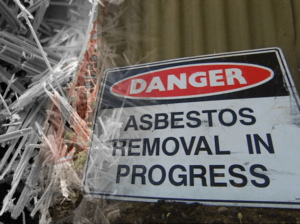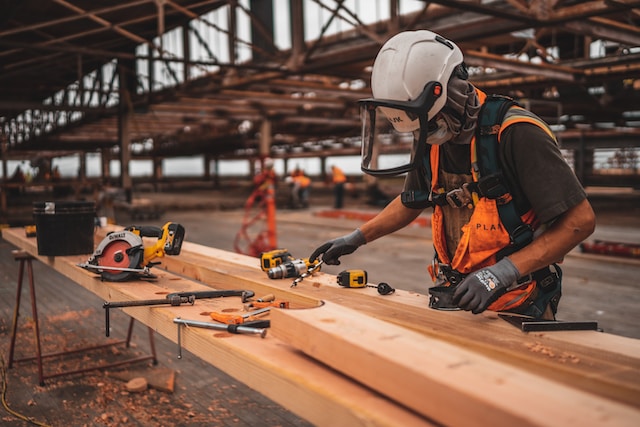Steel industrial buildings are sturdy and long-lasting, enabling you to save on maintenance costs throughout the building’s lifetime. They can be designed in various layouts to suit any commercial use.

They are also pest-proof, avoiding rat and termite infestations that can cost you a lot of money. They are easy to insulate, saving you energy bills too. For more information, visit https://www.oksteelbuildings.com/.
Unlike traditional construction, a steel commercial building is prefabricated at the manufacturer to precise specifications. This allows them to be easily assembled on the job site, cutting back on labor costs and time to completion. In addition, metal is a strong material that can withstand high winds and heavy loads, making it the perfect choice for commercial spaces.
Pre-engineered steel buildings come with all the necessary components that need to be erected, including steel framing members, roof panels, insulation and fastening hardware. They are also designed to be aesthetically appealing and customizable to suit specific business needs, from branding to design.
One of the biggest advantages of metal buildings is that they are easy to maintain. They do not rust like wood structures, and are pest and mildew resistant. Additionally, they are fireproof and can withstand severe weather conditions. In fact, a well-maintained steel structure can last for decades.
Another advantage of metal buildings is their versatility. Because they are so easy to assemble, they can be converted into just about anything. What was once a warehouse can become a storage space, and what was once a manufacturing facility can be transformed into a stylish retail store or even a home.
Finally, a commercial steel building can be constructed faster than other types of structures. This is because the components are fabricated at the factory, and shipped to the construction site ready for installation. This can save a significant amount of money on both labor and materials, as well as minimize the risk of weather delays.
Metal buildings are also a great option for commercial businesses that need to meet state and local regulations. The team at Worldwide Steel can help you navigate the paperwork and red tape to make sure that your building is built correctly and complies with all state guidelines. They can also advise you on the best layout for your building to ensure that it is able to accommodate your specific operations.
Versatile
The versatility of modern steel buildings allows them to be used for a wide range of purposes. From offices to warehouses, there is a steel building solution that fits the needs of any business. These structures are incredibly durable, energy efficient, and affordable. They can even withstand natural disasters like hurricanes and tornadoes, making them a smart investment.
They can be erected in a fraction of the time it takes to build a traditional structure. This is because pre-engineered parts are fabricated offsite, so they are ready for assembly when they reach the construction site. This speedy construction process is more cost effective, saving money both during construction and over the life of the building.
Steel buildings are also highly customizable, allowing businesses to tailor the interior to their specific needs. The open floor plans and long-span designs of these structures allow for maximum space utilization, which is especially important for businesses that need to house large equipment or inventory. These spaces can also be easily remodeled, as the building is constructed from standardized parts that are easy to change out.
Moreover, these structures are designed to be environmentally friendly. Steel is a recyclable material, and it requires less energy to produce than other construction materials. Additionally, metal buildings are highly insulated, which reduces energy costs. In fact, a properly insulated steel building can save as much as 75 percent on heating and cooling costs.
Another way that these structures are environmentally friendly is by being fire-resistant. This is a crucial feature for any business that is required to meet government fire safety regulations. Moreover, these buildings can be customized with doors and windows that comply with fire safety standards.
Lastly, steel structures can be designed to be attractive with the addition of cladding. This can help the building blend in with its surroundings and increase its resale value. For example, a steel warehouse can be clad with brick or stucco to make it look more attractive and suit the business’s image. This is a great way to attract customers and boost revenue.
Low Maintenance
When it comes to maintaining a commercial building, the costs are much lower with steel buildings. They are durable and can withstand a lot of damage. They also require very little maintenance to preserve their appearance. Having a regular maintenance schedule helps to avoid minor issues that can become major problems. For example, washing your pre-engineered steel building every couple of months is a good way to keep it looking great and to prevent the cladding from becoming blemished or stained. A simple wash with a mild laundry detergent and some warm water can make your building look new again. Washing your metal building can also help to prevent the growth of fungus or other unwanted microbes.
Another benefit of steel commercial buildings is that they are easily customizable to fit the needs of any business. They are ideal for automotive shops, agricultural buildings, sports facilities and even medical offices. Their flexible construction also means that they can be expanded as a business grows and changes. This flexibility can save businesses a lot of money in the long run.
Unlike traditional wood buildings, steel commercial structures are built 50% faster than wooden ones, which helps to reduce labor costs. They are also more energy-efficient, which can save businesses a lot of money in their energy bills. They are also more affordable to repair, which can make them a smart investment for any business.
Many people use steel storage buildings for their business because of the low maintenance costs and affordability. These buildings can protect valuable items like tools, lawnmowers, holiday decorations and more from weather-related damage. These buildings are also easy to clean and have ample space for storage. Unlike other types of storage buildings, they are not susceptible to rust or mold.
Another advantage of steel storage buildings is that they are made from high-quality materials. They are durable, affordable and can be custom-made to suit your specific needs. You can choose from a variety of options including color, insulation and door and window styles. Additionally, you can add a variety of accessories to customize your storage building.
Affordable
Steel commercial buildings are a great option for a wide range of purposes. Whether you are starting your own business, expanding an existing one, or relocating to a new location, these structures can help you save time and money by providing a sturdy structure that can stand up to harsh weather conditions without requiring expensive construction materials. In addition, these buildings are less expensive to remodel in the future. And as a non-combustible material, they may even be able to safeguard your business and its contents from fire damage.
Unlike other types of building materials, prefabricated steel structures can be delivered to your site in sections. This reduces construction costs and ensures that the work is completed on schedule. Moreover, since the pieces are already welded and assembled, there is minimal on-site labor required. Consequently, you can get your business up and running quickly and easily.
Metal buildings are also cheaper than traditional buildings in the long run. This is because they don’t require the cost of resurfacing and painting every few years as wood structures do. This helps you save a significant amount of money over the course of your business’s lifespan.
In addition, there are many affordable options for financing steel buildings. This makes it easier for small businesses to afford to expand or open a new location. This allows you to focus on your business goals and increase revenue.
Additionally, steel commercial buildings are a great option for those interested in starting their own organic farm or grow-your-own initiative. They are durable enough to withstand severe weather conditions and can be modified with extra insulation and doors for safety and temperature control. Additionally, steel is a renewable resource that can be recycled and reused at the end of its life cycle.
These advantages are just a few reasons why more and more companies are choosing to use steel storage buildings to house their business operations. Whether in the market for a strip mall, retail store, office building, or industrial warehouse, a steel building is an affordable and versatile choice that can be constructed quickly to meet your needs.




